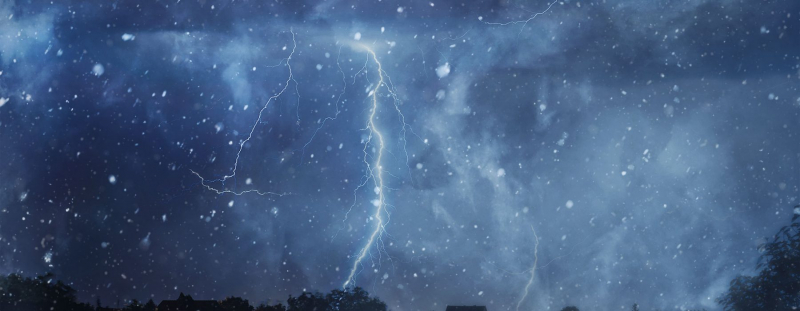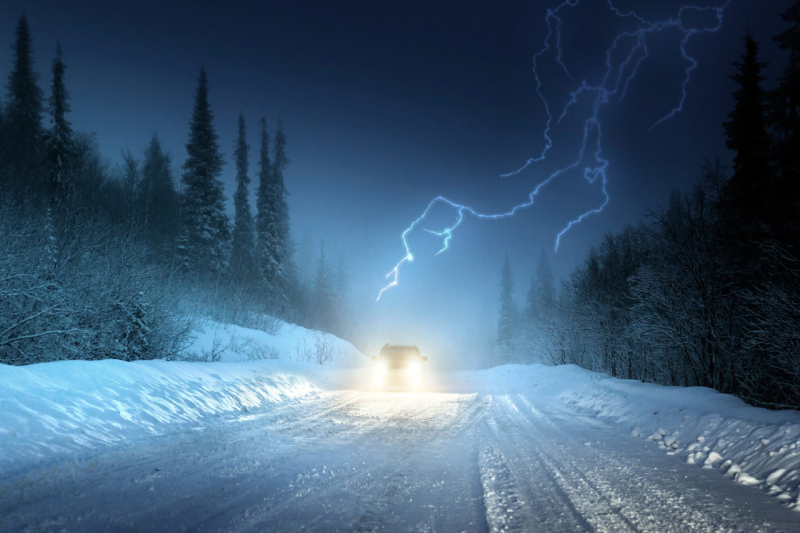Thundersnow
Thundersnow, also known as a winter thunderstorm or a thunder snowstorm, is a type of thunderstorm in which snow instead of rain falls as the major precipitation. It is regarded as a rare and exceptional occurrence. It often falls in areas of high upward motion within an extratropical cyclone's cold sector. It has the same thermodynamic properties as any other type of thunderstorm, but the peak of the cumulonimbus cloud is usually relatively low. In addition to snow, graupel and hail may fall. Thundersnow is frequently associated with a strong winter storm or blizzard with winds exceeding tropical storm force. As a result, visibility is frequently less than 14 miles, with significant wind chills that can cause frostbite. There is also a greater likelihood that thundersnow lightning will have a positive polarity, which is associated with greater destructive potential than the more common negatively-charged lightning.
Thundersnow is typically caused by three factors, including a normal snowstorm with intense vertical mixing, which creates favorable conditions for lightning and thunder to occur. It can also happen as a result of a lake or ocean effect thunderstorm, which is caused by cold air passing over relatively warm water. This phenomenon frequently causes snow squalls to form over the Great Lakes.







